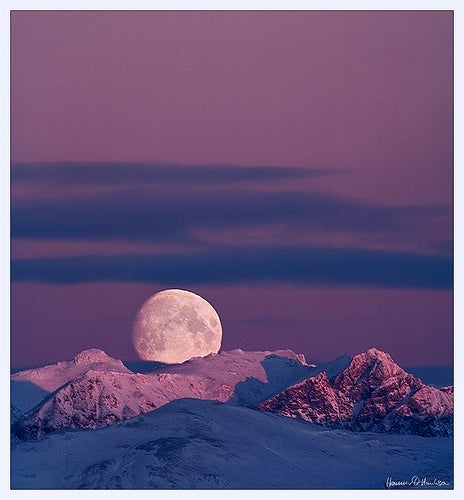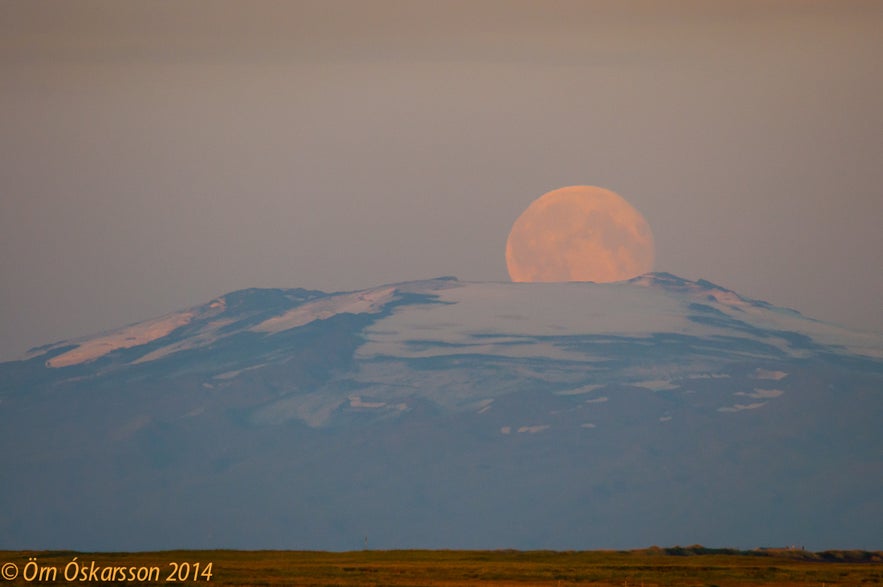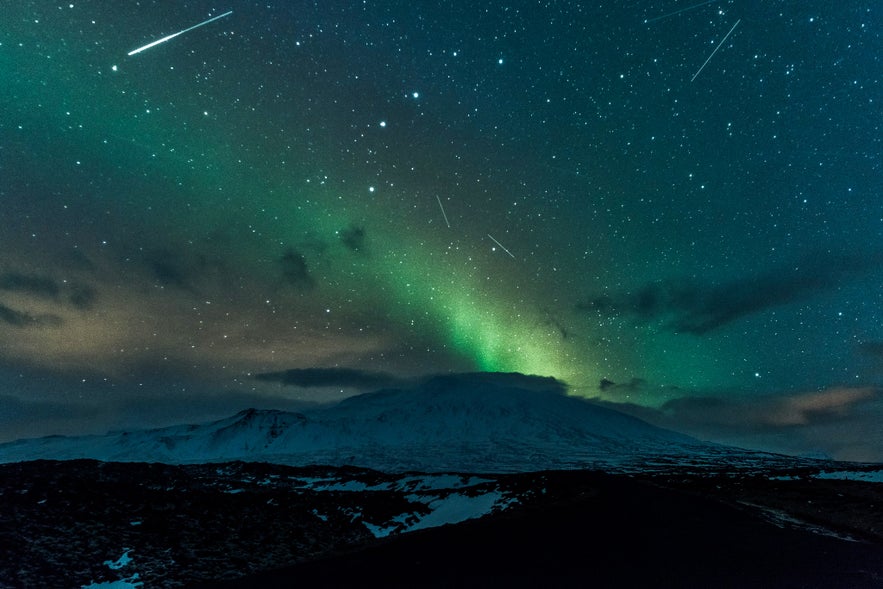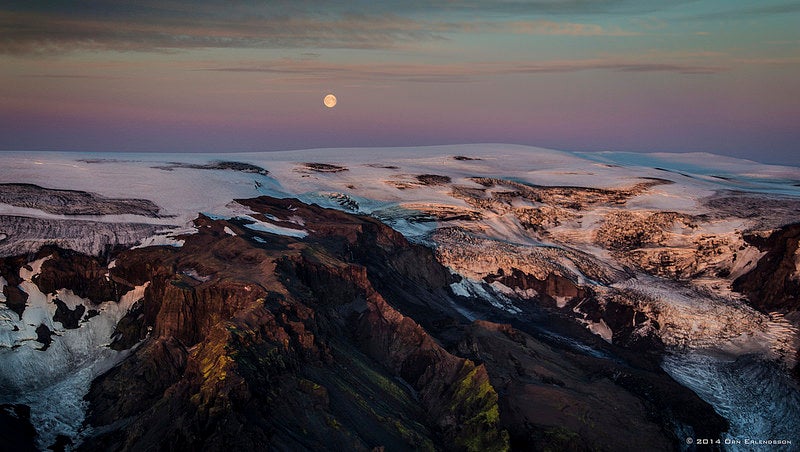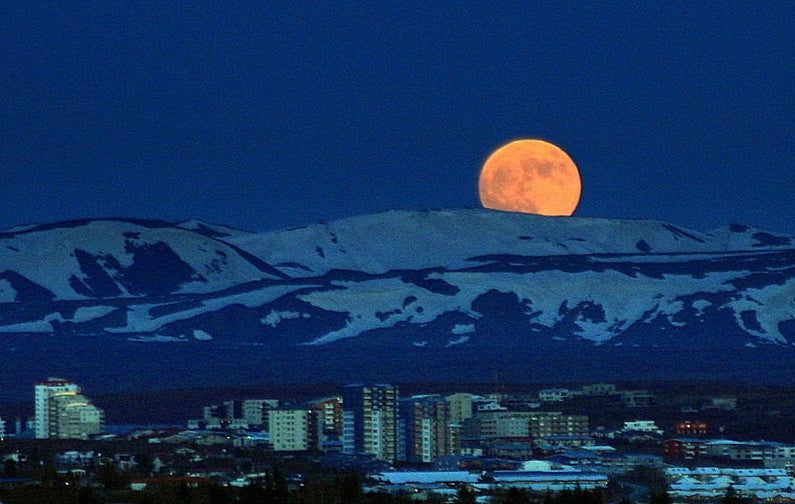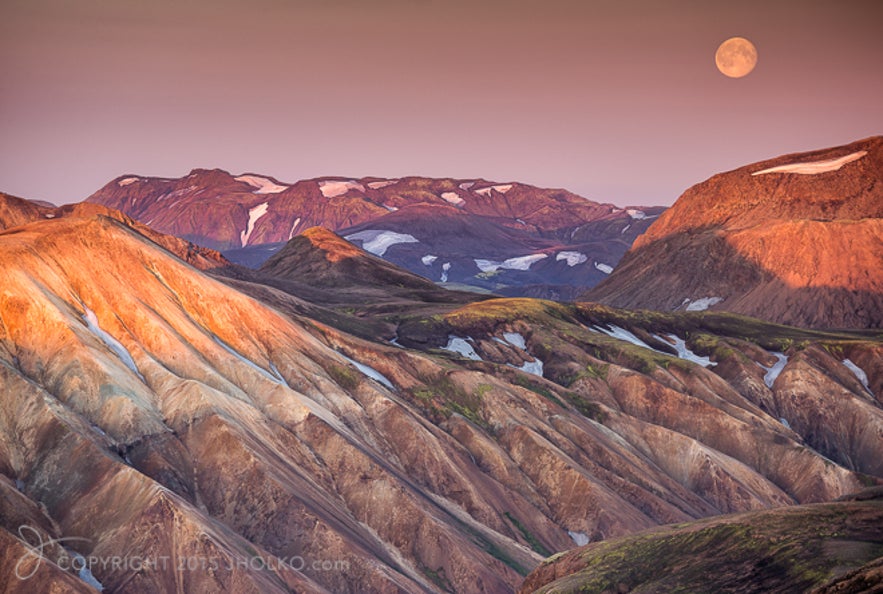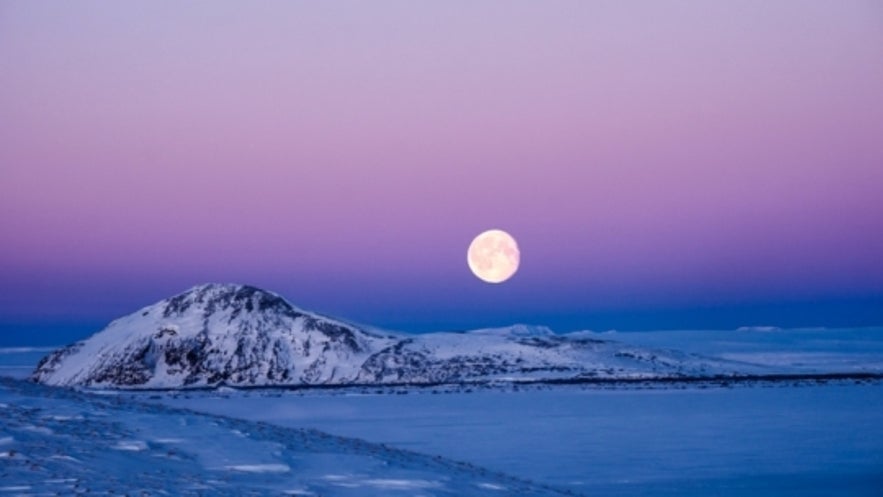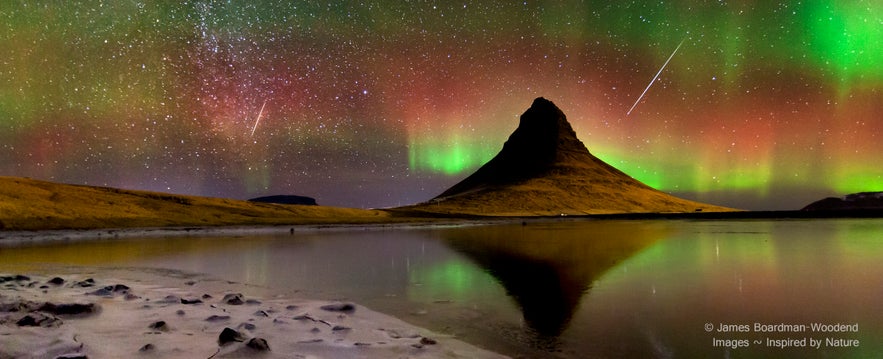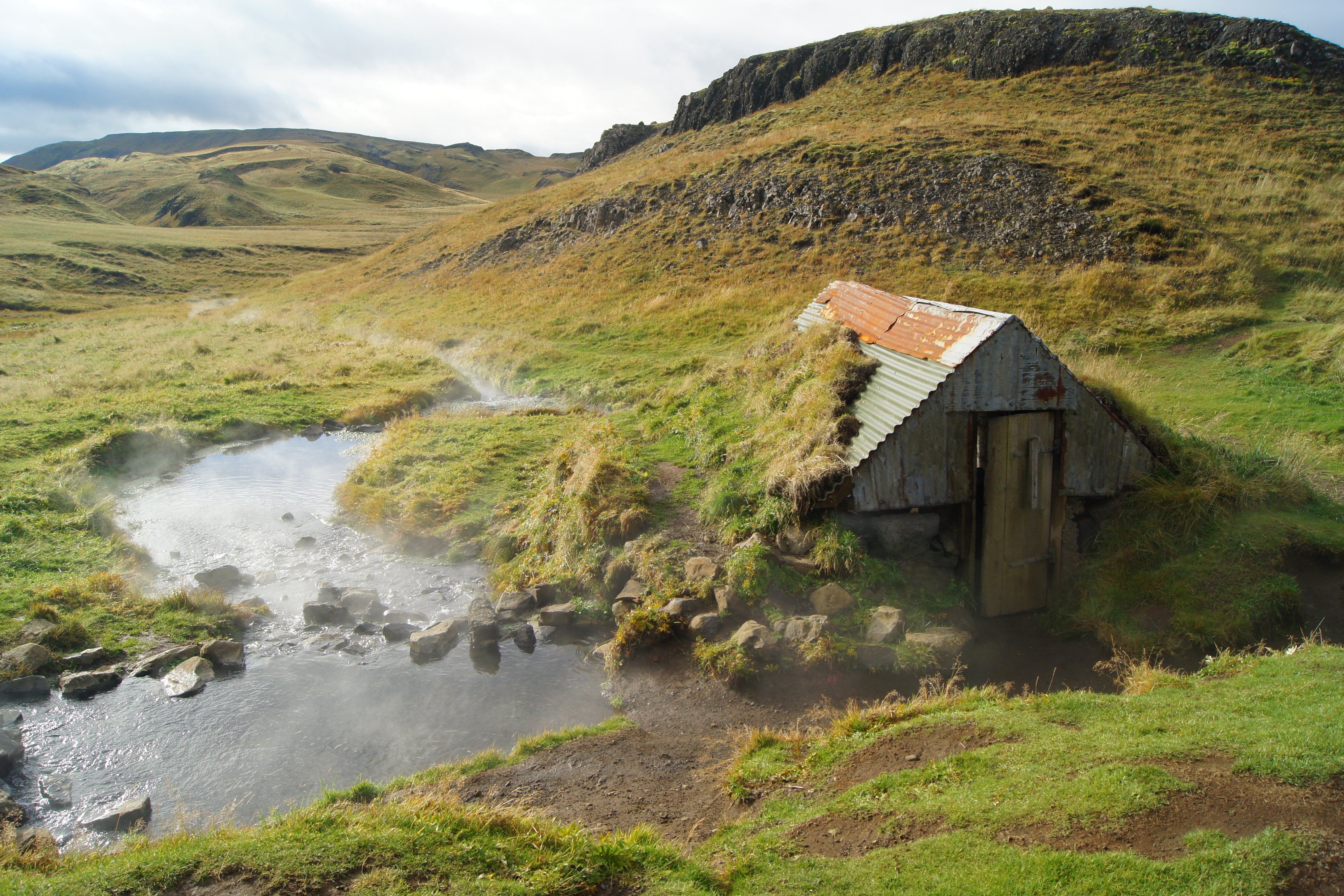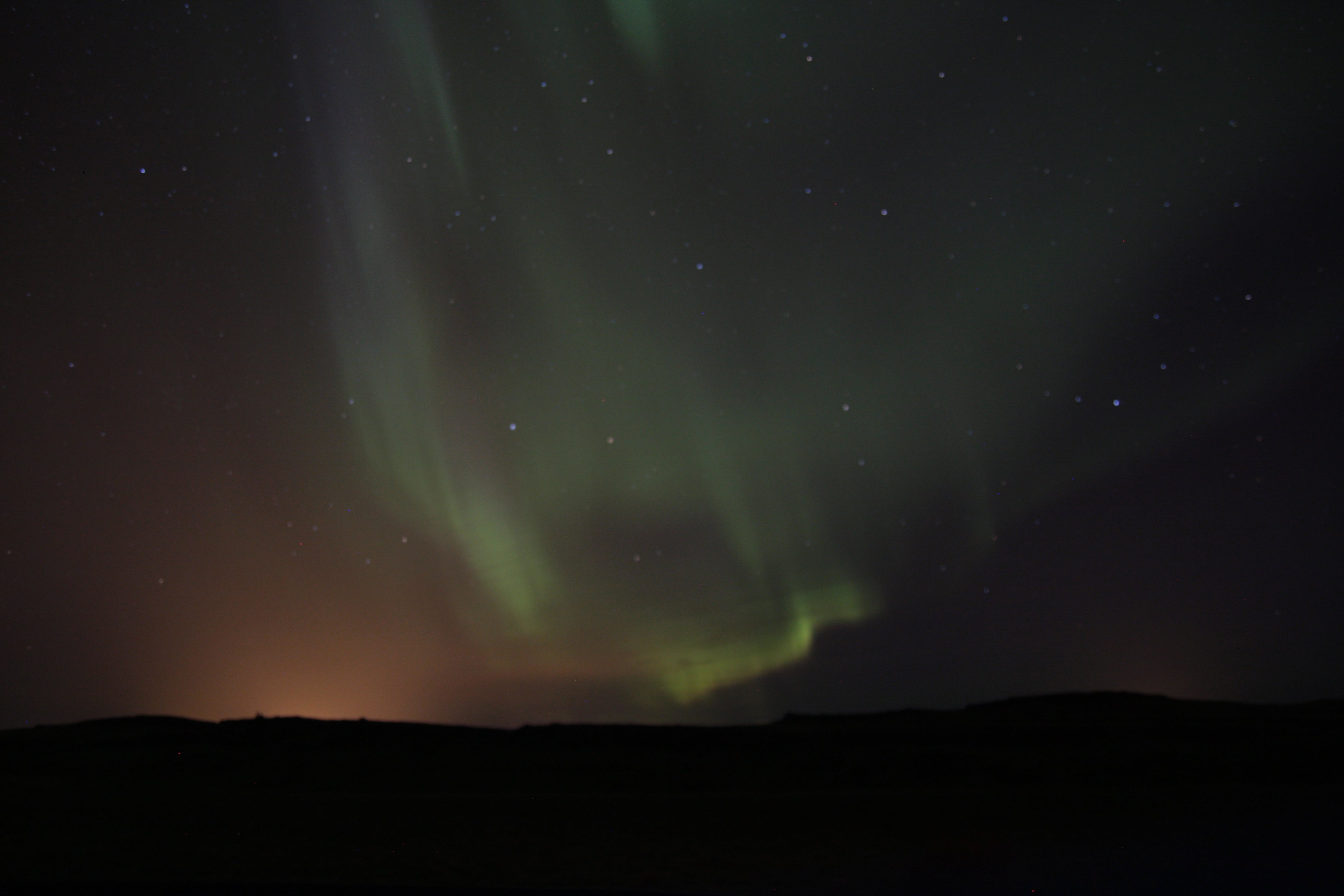See the biggest supermoon for the past 70 years in Iceland in mid-november 2016!
Supermoons are actually a rather frequent thing to happen, there are even supermoons happening in October, November and December of 2016! And if you're a fan of nature, space and photography, you shouldn't miss out on seeing this phenomenon in Iceland.
- Read more about photography in Iceland here
Picture by Örn Óskarsson
So if you're not in Iceland in mid-november, you can try your luck again around Christmas time as the following one takes place on the 14th of December (peaking just after midnight). And during the December supermoon there's also going to be a meteor shower taking place!
- Read about Christmas and New Year's Eve in Iceland here
Picture by Diana Robinson, taken by Snæfellsjökull glacier in west Iceland
Above you can see a pretty stunning example of what a meteor shower looks like on a photograph. Not to mention if there are some northern lights happening as well, and you have a glacier/volcano in the foreground.
This is what makes photography in Iceland so spectacular, not only can you photograph the stunning activity going on in the sky, you can also casually use it as a backdrop for pictures of glaciers, volcanoes, waterfalls or black beaches.
Photo by Justin Reznick, taken by Dettifoss waterfall in north Iceland
A full moon occurs every month when the sun, the Earth and the moon line up, and the moon is opposite the sun with the Earth in the middle. When the moon is orbiting the Earth the distance between the moon and the Earth varies (the orbit is not a perfect circle but elliptical/egg shaped). 'Supermoon' is a term that's used when the moon is at its closest to the Earth.
When it's the furthest away from Earth it's about 252,000 miles away, but at its closest it's about 26,000 miles closer, 226,000 miles away. At this time it can appear 30% brighter and up to 14% bigger than normally.
What makes the supermoon on the 14th of November this year so special is that the moon hasn't been as close to Earth since 1948 (68 years ago) and won't be as close to the Earth again until 2034 (18 years from now). So it's kind of like a super extra supermoon ;)
Picture by Örn Erlendsson, taken over an Icelandic glacier
The supermoon on the 14th of November reaches its peak at 13:52pm in Iceland, which is unfortunately during the height of day so it won't be visible at its absolute peak. However, to the average stargazer it will look around the same size the previous night AND the following night.
Picture by Halldór Sigurðsson taken during supermoon over Reykjavík 2012
So if you're in Iceland in mid November, get your camera ready and try to capture some stunning photos of the supermoon on the night of the 13th and the 14th of November.
The moon looks biggest when it's hanging low, as you can see it in contrast with nature or buildings - when it's high in the sky you can't compare its size to anything so it doesn't come across as impressive on a photograph, or to the naked eye.
Picture by R. Schoutens, of a supermoon rising over Seljalandsfoss waterfall
The moonrise on the 13th of November in Iceland (Reykjavík) is at 5pm, the moonset on the 14th of November is at 8:58am. So to catch the moon when it's low, be prepared from 5pm on the 13th (or a little earlier - good to find your preferred spot first!), or from 7:30am on the 14th. In case there's a cloudy sky, you can have another go the following night.
Picture by Selma Káradóttir, taken at Hverfjall/Hverfell by Lake Mývatn in north Iceland
If you're lucky the clouds might even help, like these stunning lenticular clouds that look like a hat over the moon. This is by Hverfjall volcano by Lake Mývatn.
- Read more about volcanoes in Iceland here
The moonrise on the 14th of November is at 5:21pm (so be ready from this time!) and the moonset the following day (15th of November) is at 10:34am - so you could sleep a little later and be ready from 9:30am.
You can get some pretty impressive photos of the supermoon inside cities, such as if you catch the moon next to some cool landmarks such as Harpa concert hall, Hallgrímskirkja church, Akureyri's church or the Sun Voyageur sculpture. But if you leave the city lights you may be able to catch the moon shining more brightly, and you can always use some stunning Icelandic nature in the foreground for a contrast.
- To drive out of town find your rental car here
Just take a look at this stunning picture of a supermoon over Landmannalaugar!
Picture by jholko, taken in Landmannalaugar in 2014
I saw the October supermoon over Vienna, and it was absolutely stunning - the biggest I've ever seen it and really bright. Really hoping there will be a clear night for the November one (and December one!)
I'm a total nature geek, and fascinated by space as well (planning on a trip to space for my 60th birthday, it should be affordable by then!) Space is so vast and fascinating, and holds such incredible beauty.
- Read about the supermoon and total solar eclipse in Iceland in 2015 here
Picture by Mike Moore
I'm also looking forward to seeing some fantastic pictures of the supermoon next week. If you get some great photos in Iceland then feel free to send them my way and maybe I can even get them posted on Guide to Iceland's facebook site, or add them to this blog :)
Just imagine if you can catch the northern lights at the same time, or some of the meteor shower that will take place in December - or all three:
Supermoon, northern lights, meteor shower + Icelandic landscape = Incredible naturegasm!
- Read more about the northern lights in Iceland here
Here's a picture of Mt. Kirkjufell, northern lights and meteor shower (and the Milky Way), taken in December 2012 that isn't far off:
Picture by James Boardman
I do live in an extraordinarily beautiful country.
Finally, a bonus picture - this is taken over Reykjavík in 2014 by photographer Óttar Sveinsson, when the world was gazing at blood moon around the world. However, the blood moon wasn't visible from Iceland. This is not a blood moon, but a blood-red sun rising over Reykjavík in the aftermath haze of volcanic (harmless) ash pollution. Isn't nature just so amazingly spectacular?!
Picture by Óttar Sveinsson


